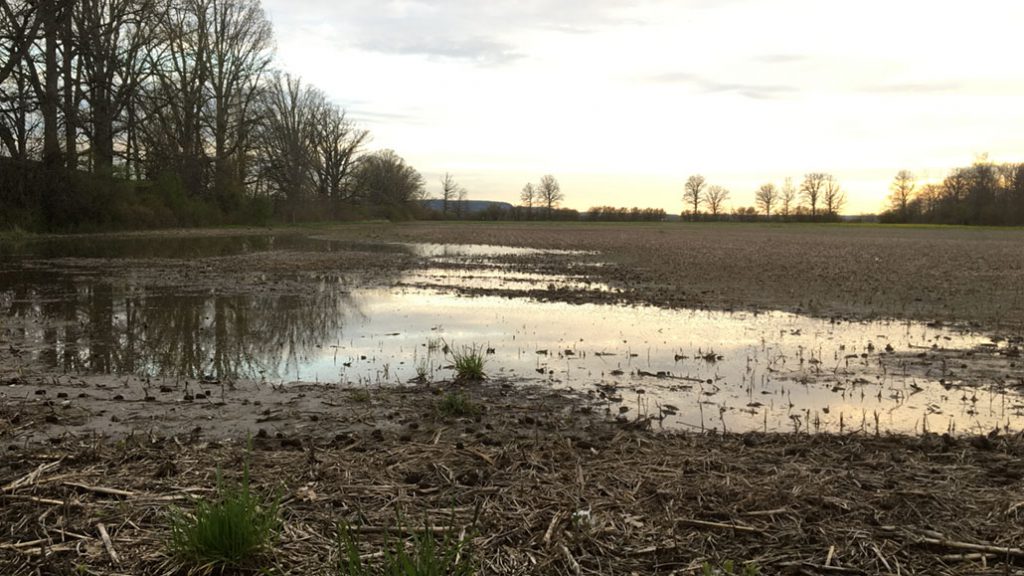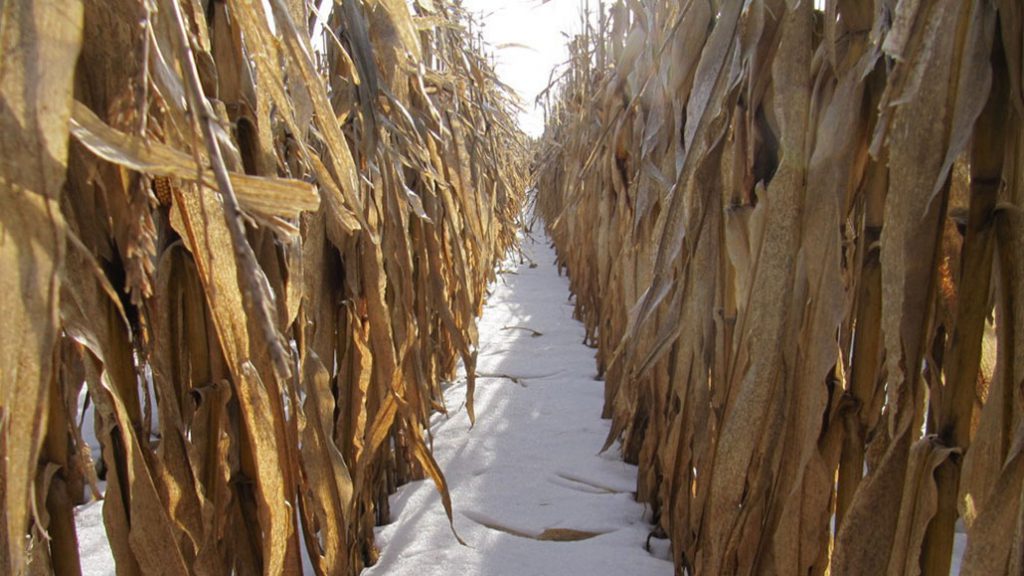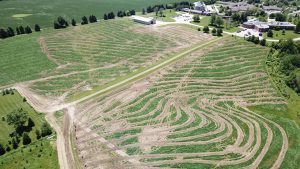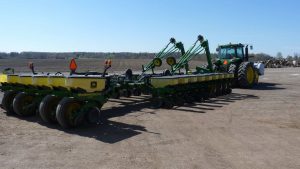A challenging year
2019 CROP YEAR IN REVIEW

THE 2019 ONTARIO grain crop year will go down in history as one of the most trying on record for farmers, according to four experts.
“It was the worst delay in planting that we’d ever seen,” says Greg Stewart, agronomy lead for Maizex Seeds Incorporated. “There was very little corn planted by May 20, and normally about 75 per cent of the crop is in by then.”
Marty Vermey, senior agronomist at Grain Farmers of Ontario says he hasn’t seen such a large acreage planted so late or so fast as what Ontario farmers pulled off in 2019.
PLANTING
“Every year, some parts of the province are affected by heavy rainfall or inclement temperatures, but last year the entire province was affected,” he says. In fact, the entire eastern seaboard of North America and parts of the Midwest were also affected.
“To start the year off late, or with poor planting conditions, chips away at yield and revenue potential right from the start,” says Sharon Vogels, agricultural consultant at Sylvite, who also notes that the wet spring was a continuation of a wet fall in 2018, compounding the pain.
Deb Campbell says that the wet conditions in late 2018 meant that the winter wheat plantings were way down.
“There were significant acres forecasted for spring cereals because a lot of the region didn’t get their winter wheat acres seeded,” the owner of Agronomy Advantage says. Her business covers central and midwestern Ontario. But with the really wet spring and all the delays, a lot of barley, oats, and spring wheat plantings were cancelled and in most cases plans shifted to planting soybeans instead.
“Interestingly, as farmers moved to mid-June and still couldn’t get corn and soybeans in the ground, they took advantage of the unseeded acreage benefits from crop insurance and then seeded barley or oats,” she says. The rationale was that they would be a good source of straw and cereal and perhaps serve as a cover crop.
“It was a ‘we’ll take what we can get’ scenario,” she says.
The delayed planting was so dire that Agricorp reviewed planting deadlines and extended them for insurance purposes for corn (two days) and soybeans (five to 10 days, depending on the location).
A record $66.6 million was paid out in unseeded acreage benefits and another $31.1 million for re-seeding as of the end of January 2020. In addition, production claims (when yield falls below the guaranteed level of production) hit $86.5 million.
In Essex, soybeans didn’t go in the ground until around June 25, with planting ending around July 10, according to Vermey. Other areas had to forego planting altogether.
“In the Niagara region, with untimely rainfall, about a third of acres didn’t have a chance to dry out and see any spring planting,” he says.
“The stress on grain farmers was immense, and most planted around the clock when conditions were only close to being fit,” Vermey says, as a result of the small windows that opened up between rains.
A third of the provincial winter wheat crop was lost due to the wet fall and the preceding wet spring. Vermey says the situation led to saturated soils in which the seed and seedlings rotted in the ground during the spring thaw.
GROWING
“All the harvest was pushed back,” says Stewart. “We had more people finish their corn harvest in December than ever, and some hadn’t finished yet in the new year.”

“Soybean harvest progressed better than 2018, and more wheat went in the ground,” says Vogels. “Soybean and corn yields and quality were all over the map.”
Adding to the headaches were a CN strike in November that created a shortage of propane for dryers and a carbon tax that increased those costs.
Vermey points out that it wasn’t a bad year for everyone. In the tobacco belt, where the soil is sandier, timely rainfalls meant that yields were good. Soybean producers, who were generally only expecting 30 to 40 bushels an acre because of the late start, were getting 50 to 60 bushels, corn growers received their best yield ever and many were nicely surprised at crop yields.
Also on the upside, DON (a form of vomitoxin) in corn was nowhere near as debilitating as in the fall of 2018.
In fact, in its 2019 corn seasonal summary, OMAFRA said, “Visual mould symptoms and DON levels were much lower than what are typically observed, with 96 per cent of the samples testing less than two parts per million (ppm) and four per cent at two to five ppm. These were among the lowest levels since the annual survey started in 2011, and a welcome change from 2018.”
In addition, winter wheat plantings in the fall of 2019 were way up — to more than a million acres according to Vermey. Most of this was due to the 300,000 unseeded acres that just weren’t planted in the spring and were ready for early wheat planting.
“Oats did better than barley, and spring wheat was fairly decent,” says Campbell. Overall, she says that genetic developments in oats and spring wheat mean better tolerance for growing in rugged conditions.
“Oats are a really good default crop,” she says. “They’re versatile from a cereals production, a green feed and cover crops perspective, and yields and lodging scores are better than they were 10 years ago.”
Late plantings and a short season also meant pockets of corn were still standing in January 2020. Campbell recommends letting the crops field dry as much as possible before harvest to cut down on drying costs.
While the 2019 season did put up a number of barriers and caused a great deal of stress, by and large, yields were better than expected, the experts agree. •



























